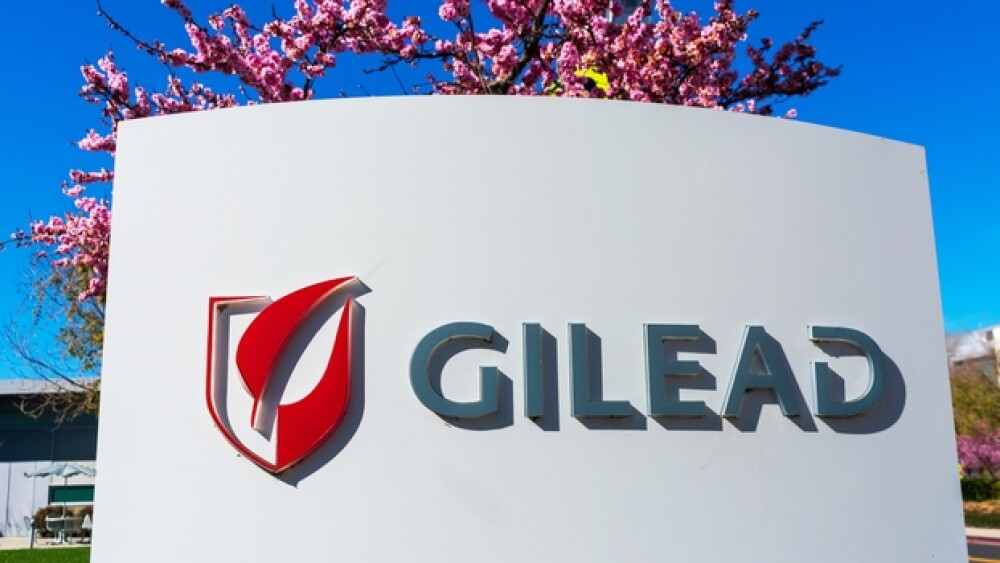Although the data hasn’t been released yet, analysts are making predictions based on what little they do know.
Michael Vi / Shutterstock
Gilead Sciences is expected to report data from a clinical trial of its antiviral drug remdesivir against COVID-19 soon. Although the data hasn’t been released yet, analysts are making predictions based on what little they do know.
With a likely vaccine a year out, optimistically, the drug, which was originally developed to treat Ebola, is considered the closest hope for a treatment. It is involved in at least five clinical trials in the U.S. and China.
On April 4, the company announced it had accelerated production of the drug based on overwhelming demand. It currently has 1.5 million individual doses available, enough to treat 140,000 patients. More than 1,700 patients have been treated on an individual compassionate use basis to date.
ad
Reading the tea leaves, analysts with Barclays think there is only a 20% chance that two of the clinical trials being run in China, one in mild-to-moderate cases and another in severely ill, will succeed. Barclays is more focused on what will happen to the company’s stock, even though at this time Gilead indicates it does not plan to charge for the drug. Barclays cites the drug’s complex manufacturing process, which normally takes a year to make, but has been streamlined to about six months, and the difficulties of setting a price and selling a drug for and during a global pandemic.
Barclays also expressed concern that the people being treated by the drug after the disease was well advanced, instead of at a point where it would be more effective.
Other analysts are studying what few moves the company is making publicly to make their predictions. For example, according to clinicaltrials.gov, the remdesivir trial page was updated, changing the size of a study in severe patients from 400 to 2,400, and the moderate patient trial from 600 to 1,600.
RBC believes these numbers include the compassionate use programs and writes, “It is unclear whether all of these patients will be considered in the primary endpoint, but any additional patients should help improve the powering to detect a potential treatment effect (though also indicates they believe more patients would be needed to be able to show a benefit).”
They go on to write, “We believe the changes improve alignment to the latest understanding of COVID-19’s course and should maximize sensitivity to detect any potential treatment effect, though they also imply that—perhaps based on data the company may be observing from ongoing experience with the drug—the magnitude of benefit, if any, is likely to be modest. This aligns with our view that remdesivir, like other COVID-19 drugs in development, would be more likely to have incremental effects in specific populations vs. proving to be a panacea.”
RBC suggests that Gilead’s decision to modify the trial, moving patients on ventilators to a different arm and changing the endpoints, moving to an improvement on a 7-point ordinal clinical assessment scale, means they may be looking for ways to identify if the drug is making more modest positive effects because more obvious ones may not have been possible in the previous design. “Overall, however, these endpoint modifications also underscore our view that based on evolving data to date, both published and followed internally by the company, Gilead may not be expecting to see dramatic benefits.”
Umer Raffat, an analyst at Evercore ISI, however, is more optimistic, writing in a note to investors that “since the Gilead-run trials are open label, the changes made were likely informed by emerging data from these trials. These trials now have LOTS more patients and different endpoints … but allow me to focus on key conclusions…”
The first conclusion of Raffat’s is that the likelihood of success in the moderate-patient trial has increased with the new endpoints, suggesting patients might be recovering more quickly, although it may not have a major impact on how quickly patients are discharged from the hospital, which was a previous primary endpoint, “but remdesivir likely did improve patient status while in hospital.”
The scope of the patients with severe disease has been expanded to include a higher severity level. Raffat interprets this to mean if researchers weren’t seeing any signals in this patient population, they wouldn’t be expanding the criteria to an even higher level. The earlier trial did not include patients on mechanical ventilation, but a “Part B’ has been added to include those patients.
Analysts, of course, are largely focusing on financial up- or downsides for the company. Most of the rest of the world is more interested in whether the drug works. We should get the first sense of that soon.





